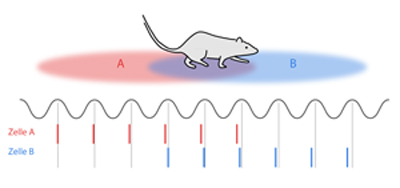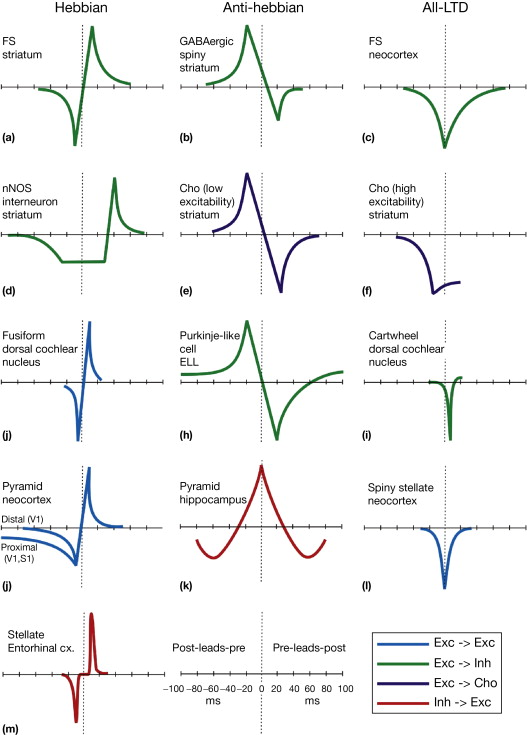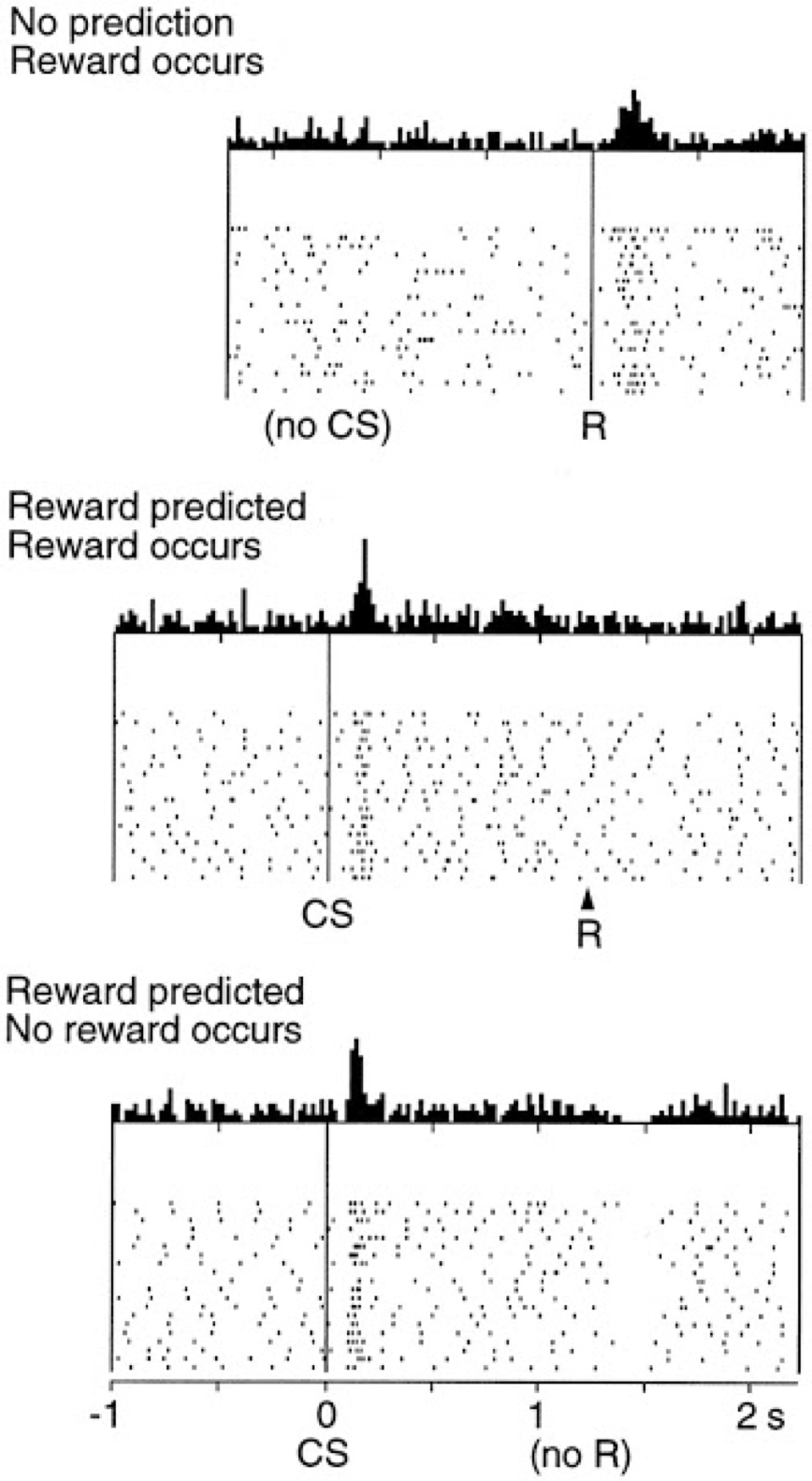| Episodic Memory |
Autobiographical memory. E.g. what you had
for breakfast yesterday. Where you went to school. |
medial temporal lobe / acetylcholine |
| Source Memory |
Knowledge about how you know
something. |
E.g. when did you first hear about action
potentials? |
| Semantic Memory |
Information about the world. The president
of China. The first month of the year. |
distributed? |
| Procedural Memory |
How to do something. E.g. play the piano,
ride a bike. |
motor cortex / basal ganglia /
dopamine |
| Emotional memory |
An association between a thing and a value
(good or bad). Chocolate tastes good. Fire burns. A certain dog
bites. |
Amygdala |
| Working memory |
a short-term form of memory often
associated with combining or integrating multiple items in memory
together. E.g. doing math problem in your head, trying to count cards at
a casino, finding the largest number in a list. Generally, the items in
memory are discarded soon after finishing. |
prefrontal cortex (for longer durations,
hippocampus). |
| Spatial working memory |
like working memory but in particular for
a location in space. e.g. when playing basketball keeping track of where
the players are on the court. |
frontal eye field and other regions. |
| LTP/D |
Long-term potentiation/depression. Changes
in synaptic strength that last for more than 1 day. Requires new protein
synthesis and changes to cyto-skeleton |
|
| STP/D |
Short-term potentiation/depression.
Changes in synpatic strength that last for a short time (usually 30 min
- a few hours) |
|
| Spatial Attention |
enhancing processing of one part of the
world. |
frontal-parietal-tectal circuit,
acetylcholine |
| Feature Attention |
Focused processing on a non-spatial
dimension of the world. E.g. looking for a friend in a red jacket.
Focused listening of one instrument at the symphony. |
Depends on modality. Higher sensory cortex
with PFC |
| Overt vs. Covert attention |
Overt attention is externally observable.
e.g. by measuring eye/head/body positions. Covert attention is
not-externally observable. e.g. “looking” at someone out of the corner
of your eye or shifting your focus from vision to hearing or touch. |
Depends. For switching modulality,
probably thalamus. |
| Habit |
an action that is performed regardless of
the outcome. For example, if you eat a snack every day at 5pm, and then
one day you have a huge meal at 4pm and you are really full but you
still eat the snack, then it is a habit. |
|
| Goal-directed action |
opposite of habit. A behavior that is
performed to achieve a goal. Generally more flexible than habits. |
dopamine |
| Motivation |
Used to describe levels of drive.
(i.e. scaling of objective functions). When we are thirsty we are
motivated to get water. But once we are not thirsty the same outcome
(water) has less value. |
dopamine, noradrenaline, opiates |
| Behavioral inhibition |
e.g. self-control Ability to suppress
actions based on context. E.g. you want to eat the cookie, but you are
trying to lose weight, or you want your friend to have the last one |
prefrontal cortex, serotonin |
| perceptual decision-making |
Making a decision about some physical
property of an object. E.g. is that picture hanging straight? Is there a
pothole in the road? Will the ping-pong ball miss the table |
probably secondary sensory cortex. |
| value based decision-making |
also called economic or financial
decision-making. Should I buy this stock? Should I ask that girl out on
a date? Should I wait for the bus? Most real decisions involve both
perceptual and value-based parts. |
striatum / nucleus accumbens / orbital
frontal cortex / dopamine |



